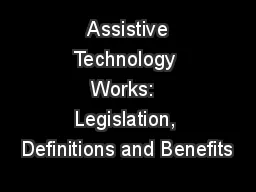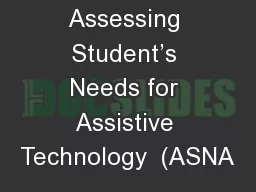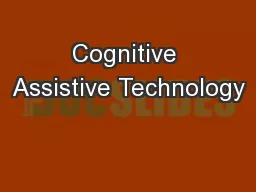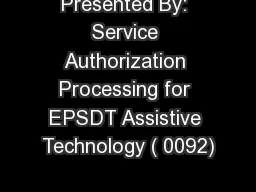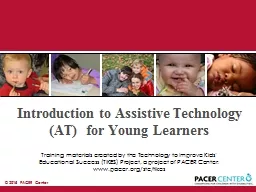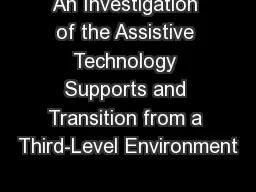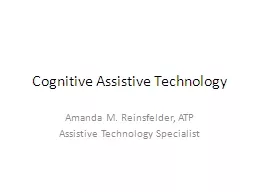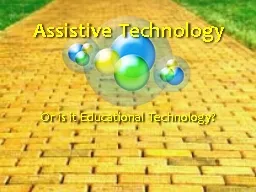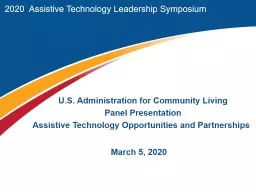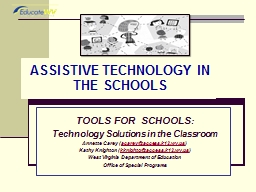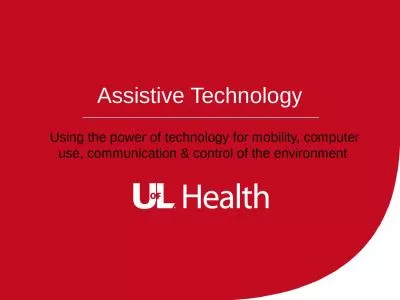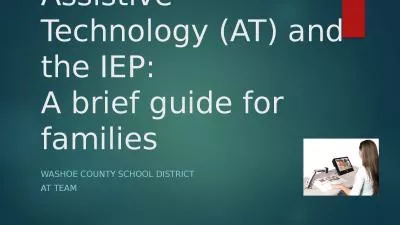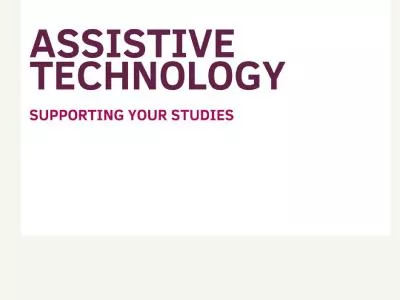PPT-Assistive Technology Works: Legislation, Definitions and Benefits
Author : alexa-scheidler | Published Date : 2020-04-03
Virginia Department of Education Assistive Technology Priority Project Check your knowledge Answer true or false to the following statements Assistive technology
Presentation Embed Code
Download Presentation
Download Presentation The PPT/PDF document " Assistive Technology Works: Legislatio..." is the property of its rightful owner. Permission is granted to download and print the materials on this website for personal, non-commercial use only, and to display it on your personal computer provided you do not modify the materials and that you retain all copyright notices contained in the materials. By downloading content from our website, you accept the terms of this agreement.
Assistive Technology Works: Legislation, Definitions and Benefits: Transcript
Download Rules Of Document
" Assistive Technology Works: Legislation, Definitions and Benefits"The content belongs to its owner. You may download and print it for personal use, without modification, and keep all copyright notices. By downloading, you agree to these terms.
Related Documents

